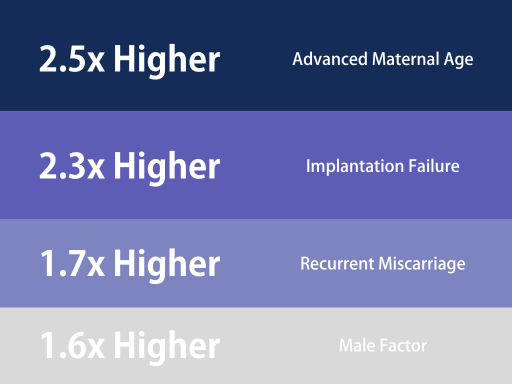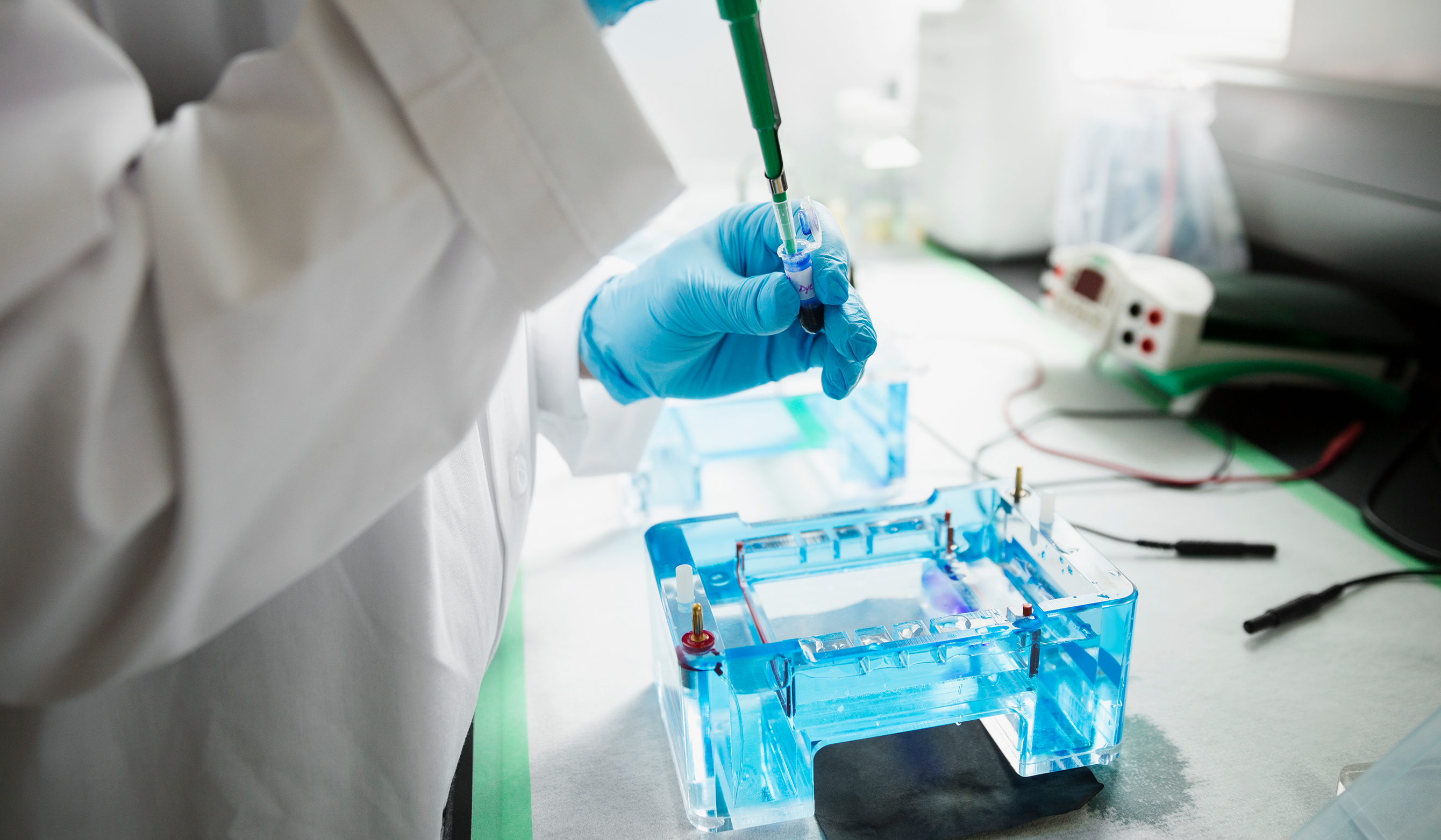Genetic Testing
Advances in fertility technology can increase the chances of conception of a genetically healthy baby through Preimplantation Genetic Testing (PGT).
What is Preimplantation
Genetic Testing?
Preimplantation Genetic Testing (PGT) allows for screening an embryo for genetic or chromosomal abnormalities. Each embryo contains 23 pairs of chromosomes, for a total of 46. PGT testing enhances the chance of a live birth by selecting embryos with the highest rating for embryo transfer. The remaining screened embryos are then frozen for future use.
PGT Steps

Embryo

Results

Best embryo is
What is the PGT process?
1. A cell biopsy from the tissue that will become the placenta is taken from an embryo for testing.
2. The test sample is placed in a tube and shipped to a genetic testing lab for analysis. Embryos remain at the Fertility Centers of Illinois IVF center.
3. Testing results are sent a couple weeks later to your physician in a genetic report. Your physician will call to discuss the results and next steps.
4. The embryo(s) with the highest genetic quality are identified and one is transferred to the uterus. Embryos are safely frozen until a frozen embryo transfer can be scheduled. Patients receive medications to optimize the uterine lining and receptivity.
Who Should Do Genetic Testing?
While genetic abnormalities can and do happen at any age, the prevalence increases as a woman approaches age 38 and beyond.
In addition to women with advanced maternal age, other candidates for PGT include those who have experienced two or more miscarriages with an unknown cause, chromosomal abnormalities in a previous pregnancy, two or more assisted reproductive cycles without a pregnancy, or a male infertility diagnosis indicating a low sperm concentration.

Types of Preimplantation
Genetic Testing
- PGT-A Testing helps identify embryos with the correct number of chromosomes (euploid) and those with an abnormal number (aneuploid). This allows us to select the healthiest embryo for transfer, greatly increasing the chance of pregnancy while lowering the risk of miscarriage. Using the most advanced technology available, PGT-A can detect chromosomal concerns such as aneuploidies, mosaicism, and segmental alterations—with an accuracy rate of about 99%. Because testing takes a few weeks, embryos are safely frozen until a frozen embryo transfer can be scheduled. This option is often recommended for couples when the woman is over 38, as it can improve outcomes and reduce the time to a successful pregnancy.
- PGT-SR Testing is performed to identify structural rearrangements in embryos. The rearrangement, known as translocation, can lead to pregnancy loss.
- PGT-M Testing, previously known as preimplantation genetic diagnosis (PGD), can detect specific genetic defects within an embryo. For couples who have a family history of genetic disease or are known carriers of a genetic disease, PGT-M testing allows for embryos to be screened down to the level of genetic DNA. This level of testing can identify specific gene abnormalities such as Cystic Fibrosis, Down Syndrome, or Spinal Muscular Atrophy.





